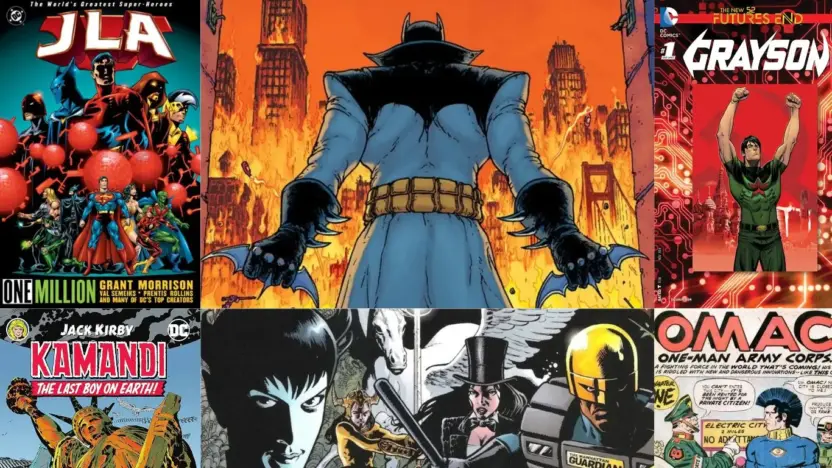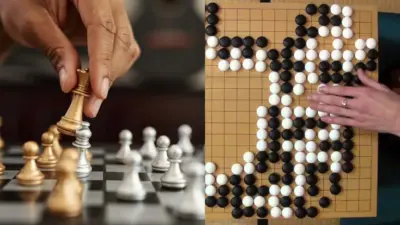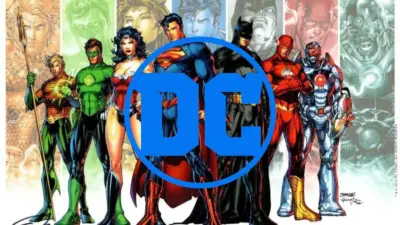Within the vast multiverse of DC Comics, the art of storytelling knows no bounds. As we traverse the intricate tapestry of its narratives, we often find ourselves transported to realms where the shackles of time and space unravel, unveiling distant futures teeming with boundless imagination and wonder. These futures serve as an expansive canvas, inviting writers and artists to craft vivid and thought-provoking tales. In this exploration of the “Top 10 DC Comics Set in a Distant Future,” we embark on a captivating journey through time, where beloved heroes and fresh characters venture into uncharted territories.
Top 10 DC Comics Set in a Distant Future
Legion of Super-Heroes
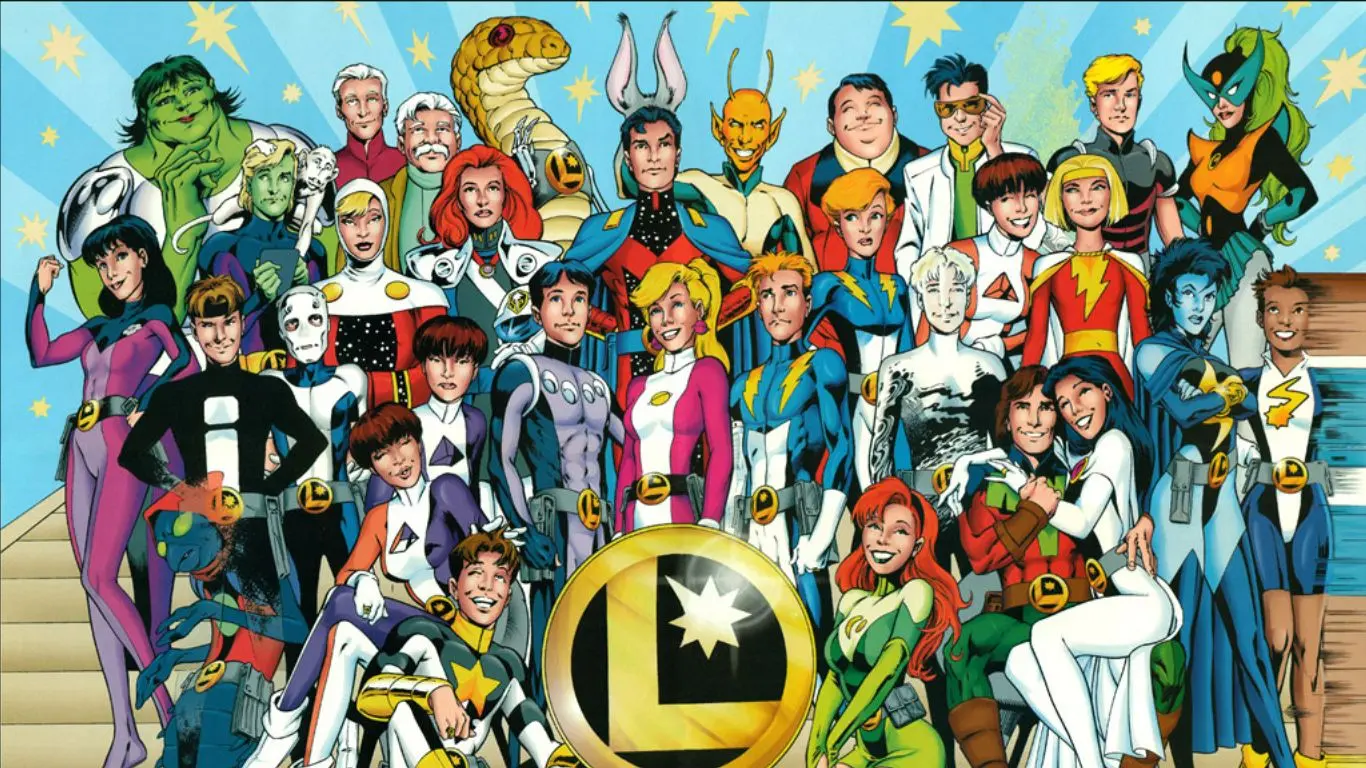
The Legion of Super-Heroes has undergone a remarkable evolution within the pages of DC Comics. Originating as a feature in Adventure Comics, they rose to prominence in “Superboy starring the Legion of Super-Heroes” before a limited series consolidated their presence as “Legion of Super-Heroes Volume 1.”
The story of the Legion of Super-Heroes is a journey through time, quite literally. These young heroes, hailing from the 30th and 31st centuries, unite to protect the galaxy from various threats. Their origins are intertwined with Superboy, who inspired them with his heroic deeds in the past. With each iteration, the Legion of Super-Heroes continues to evolve while maintaining their core values of unity, heroism, and the pursuit of justice across the vast tapestry of the future.
Kamandi: The Last Boy on Earth
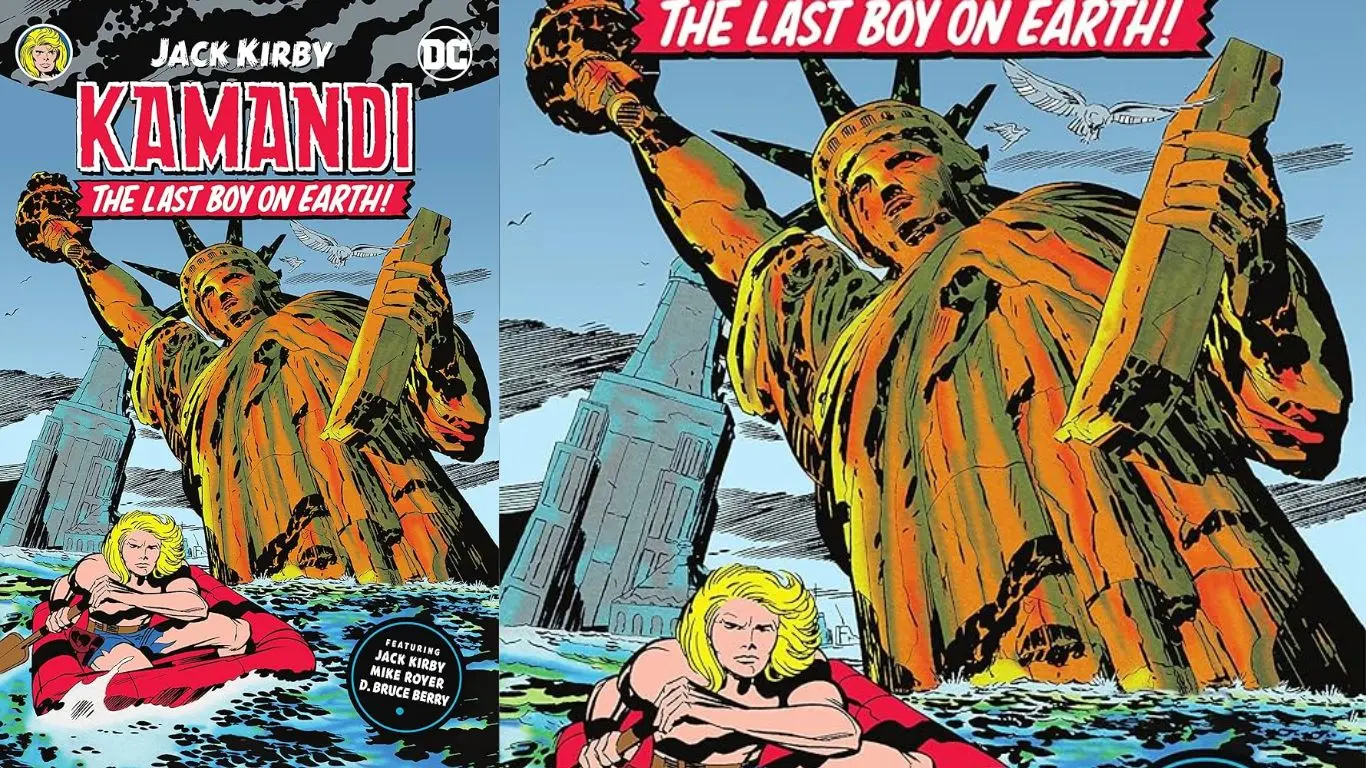
Jack Kirby’s “Kamandi” is a visionary creation that emerged during his tenure at DC Comics. The story centers on Kamandi, the eponymous protagonist, who exists in a far-future world where he stands as one of the last remaining intelligent humans. This unique world is under the dominion of bipedal, highly intelligent animals, a concept reminiscent of “Planet of the Apes.”
Kirby’s genius lies in taking this initial concept and expanding it into a vast tapestry of wild and imaginative ideas. Following a catastrophic event known as the “Great Disaster,” the world is a patchwork of bizarre regions, including the enigmatic “Kanga Rat Murder Society” and the eerie “Mad-Hole Country of Screamers.”
“Kamandi” is a high-concept, high-energy adventure that immerses readers in a world brimming with inventive concepts. Kamandi’s quest to explore this bewildering landscape, where he is perceived as a lesser being, drives the narrative. Ultimately, his journey is a heroic quest to restore humanity to its rightful place in civilization, making “Kamandi” a standout addition to the realm of DC Comics.
O.M.A.C. (One Man Army Corps)
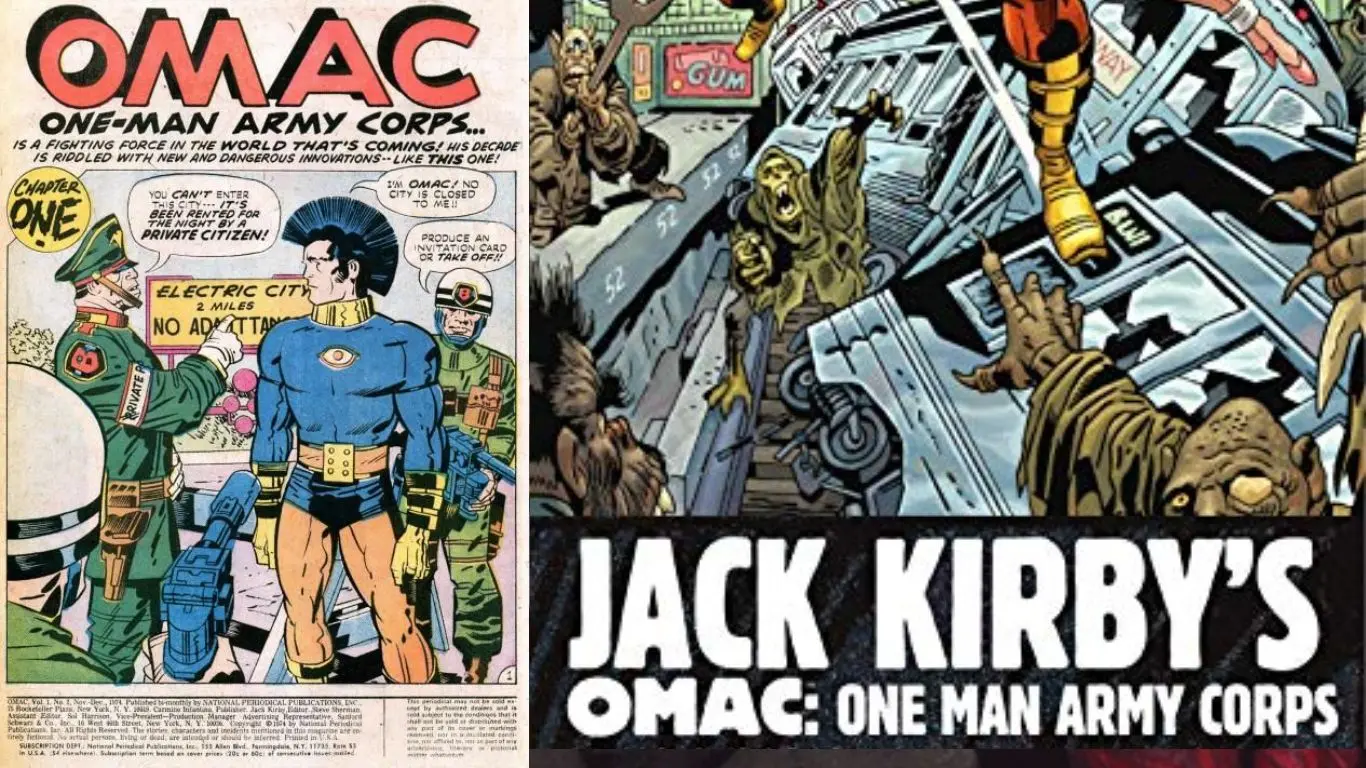
Jack Kirby’s ’70s science fiction masterpiece, “OMAC,” introduces readers to Buddy Blank, who assumes the mantle of the One-Man Army Corps. Set against the backdrop of a future known as “The World That’s Coming,” Buddy’s journey begins as an ordinary corporate worker, a cog in the corporate machinery. However, his life takes an unexpected turn when he becomes embroiled in the ceaseless conflict orchestrated by the faceless Global Peace Agency (GPA), driven by the AI satellite, Brother Eye.
Kirby’s storytelling in “OMAC” is a blend of the abstract and daring, showcasing some of his most iconic and innovative imagery. While the narrative may appear unconventional, Kirby’s work delves deep into metaphorical storytelling. Buddy Blank emerges as a symbol of resistance against the forces of Armageddon, standing as a bulwark against billionaires, private armies, and unscrupulous corporations that misuse technology without regard for the rule of law.
Grayson: Futures End
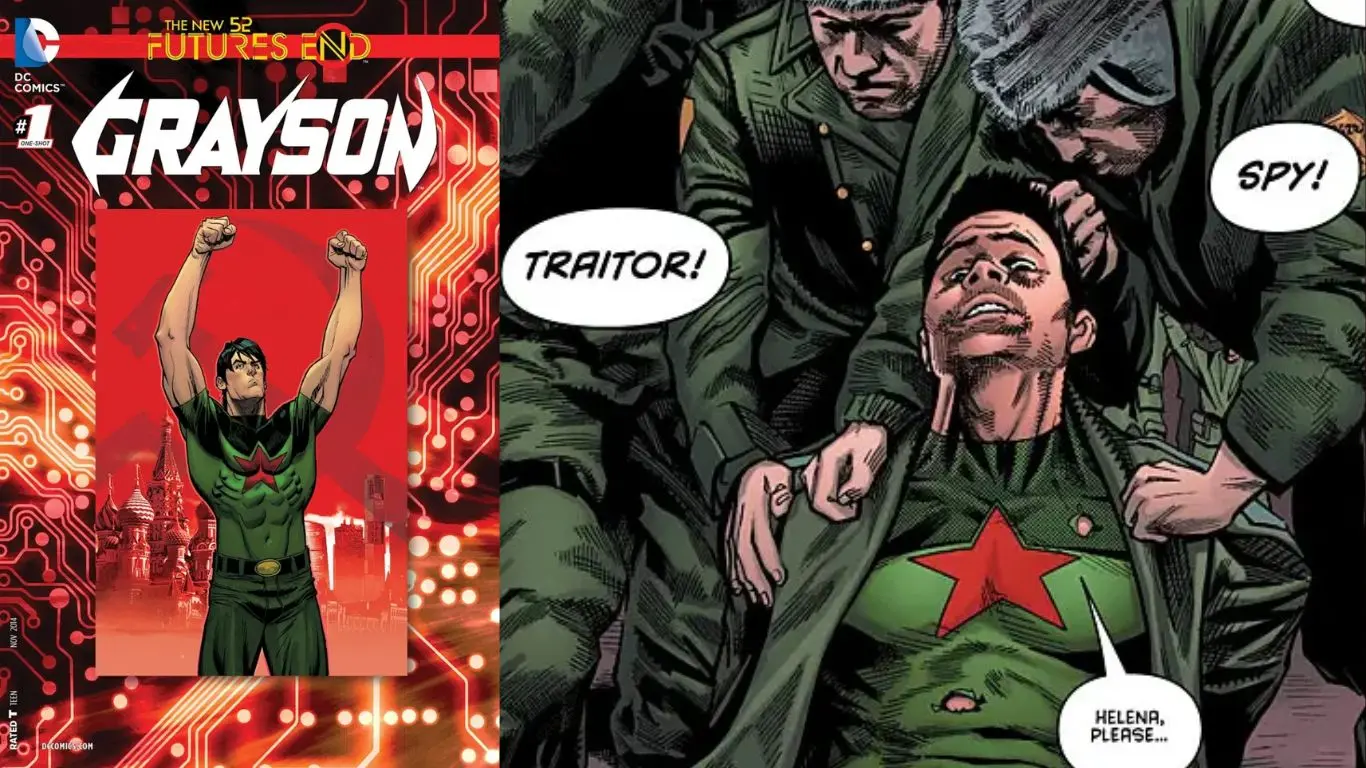
It is a compelling standalone tie-in to the “Futures End” crossover event in DC Comics. Crafted by writers Tom King and Tim Seeley, the story unfolds in reverse chronological order, beginning with the shocking execution of Dick Grayson. As the pages turn, readers discover that Grayson is not what he seems; he’s a high-ranking agent and a supposed traitor within the KGBeast’s empire, now a global dictator.
This narrative approach keeps readers on the edge of their seats, constantly questioning how the beloved hero reached this dire point. The story’s clever use of reverse chronology adds layers of suspense and intrigue, with each revelation leading to more unexpected twists. “Grayson: Futures End” is not just a thrilling tale; it’s a testament to the creative possibilities of comics, blending character-driven storytelling with formal experimentation.
The Dark Knight Returns
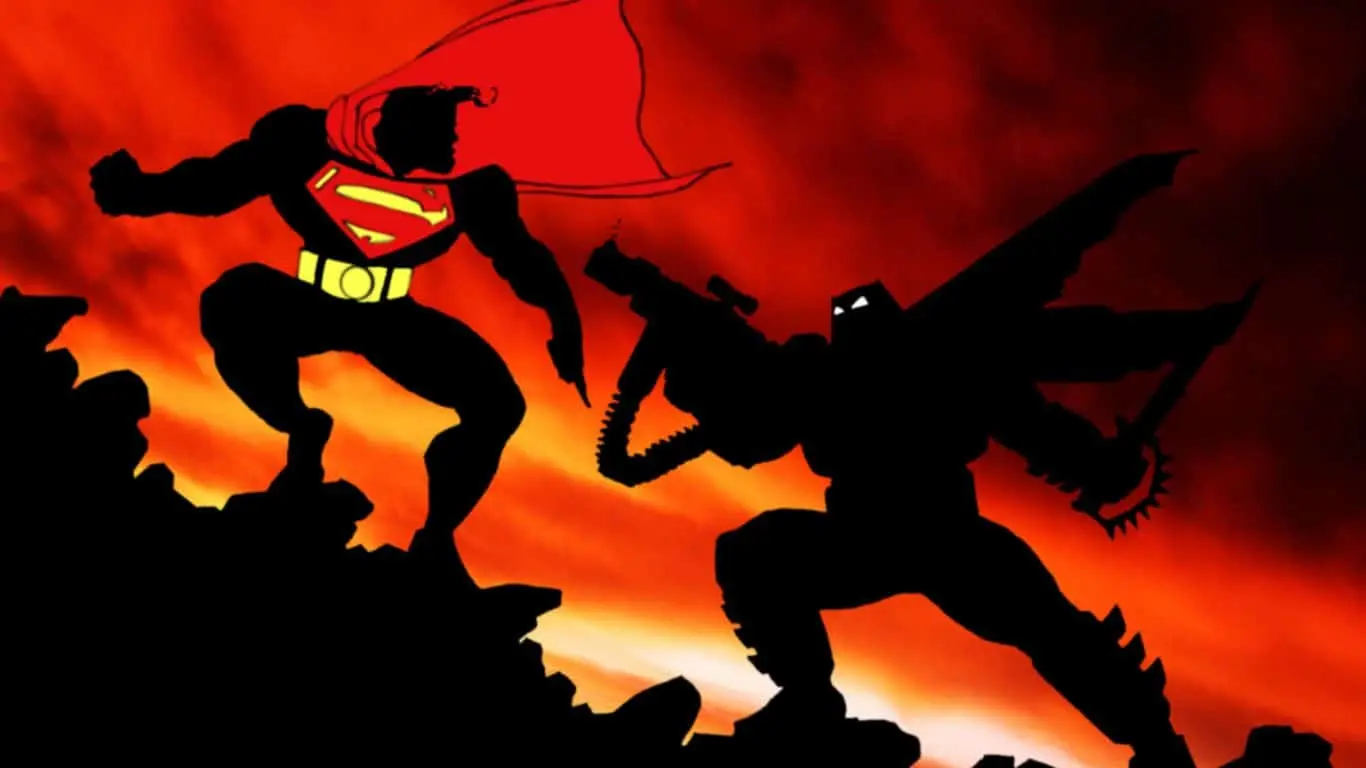
Frank Miller’s “The Dark Knight Returns” stands as a seminal work that redefined the superhero genre in the ’80s. The story unfolds with an aging Bruce Wayne emerging from retirement to confront a Gotham City teetering on the edge of chaos. Miller’s distinctive artistic style, characterized by gritty, blocky illustrations and dense 16-panel grids, brings a unique visual flavor to the tale.
What sets this miniseries apart is its unflinching portrayal of an older Batman, showcasing brutal action sequences and delving deep into the character’s tortured psyche through internal monologues. “The Dark Knight Returns” marked a pivotal moment in Batman comics and American mainstream comics as a whole, pushing the boundaries of storytelling.
Miller’s narrative explores Batman as an addiction, one that consumes both Bruce Wayne and the city he seeks to protect. It delves into the moral ambiguity of Batman’s actions and the personal vendetta that fuels his enduring crusade. “The Dark Knight Returns” remains a classic, leaving an indelible mark on the world of comics and pop culture.
Seven Soldiers
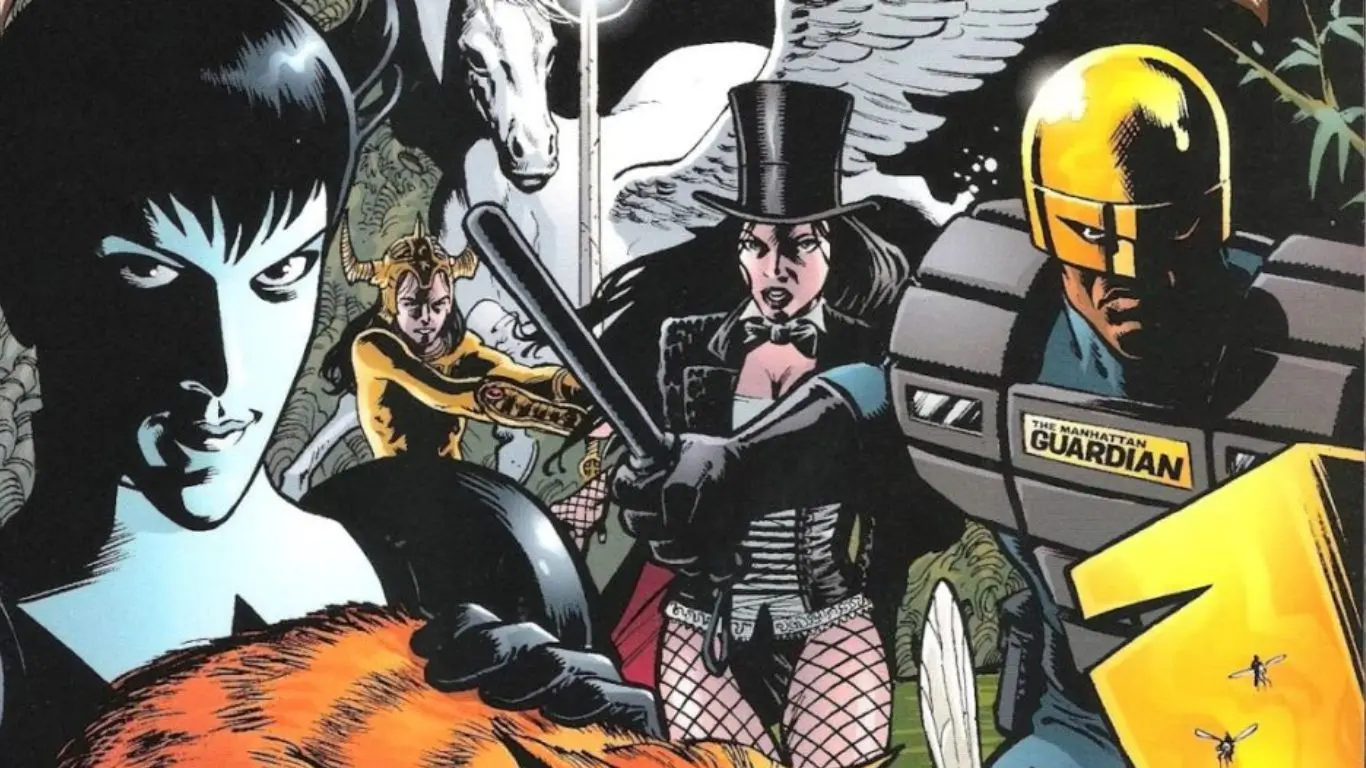
The comics weaves an intricate narrative of seven interconnected stories, each featuring minor DC characters, as they confront the enigmatic Sheeda. These malevolent beings hail from Earth’s distant future, where they have replaced humanity. Masters of both science and magic, the Sheeda have ruthlessly drained Earth of its resources, transforming it into a desolate wasteland.
Their modus operandi is chillingly methodical – they descend upon civilizations at their zenith, annihilating monuments, overpowering heroes, and plundering the wealth of knowledge, all in service of sustaining their own long-dead society. Their last devastating reaping targeted prehistoric Camelot, an event shrouded in legend.
In “Seven Soldiers,” the Sheeda return to harvest from a new era of heroes, setting the stage for a high-stakes battle that reverberates across time and space. Grant Morrison’s storytelling prowess shines as he crafts a captivating narrative that explores the eternal struggle between heroes and a relentless, time-spanning adversary.
DC One Million
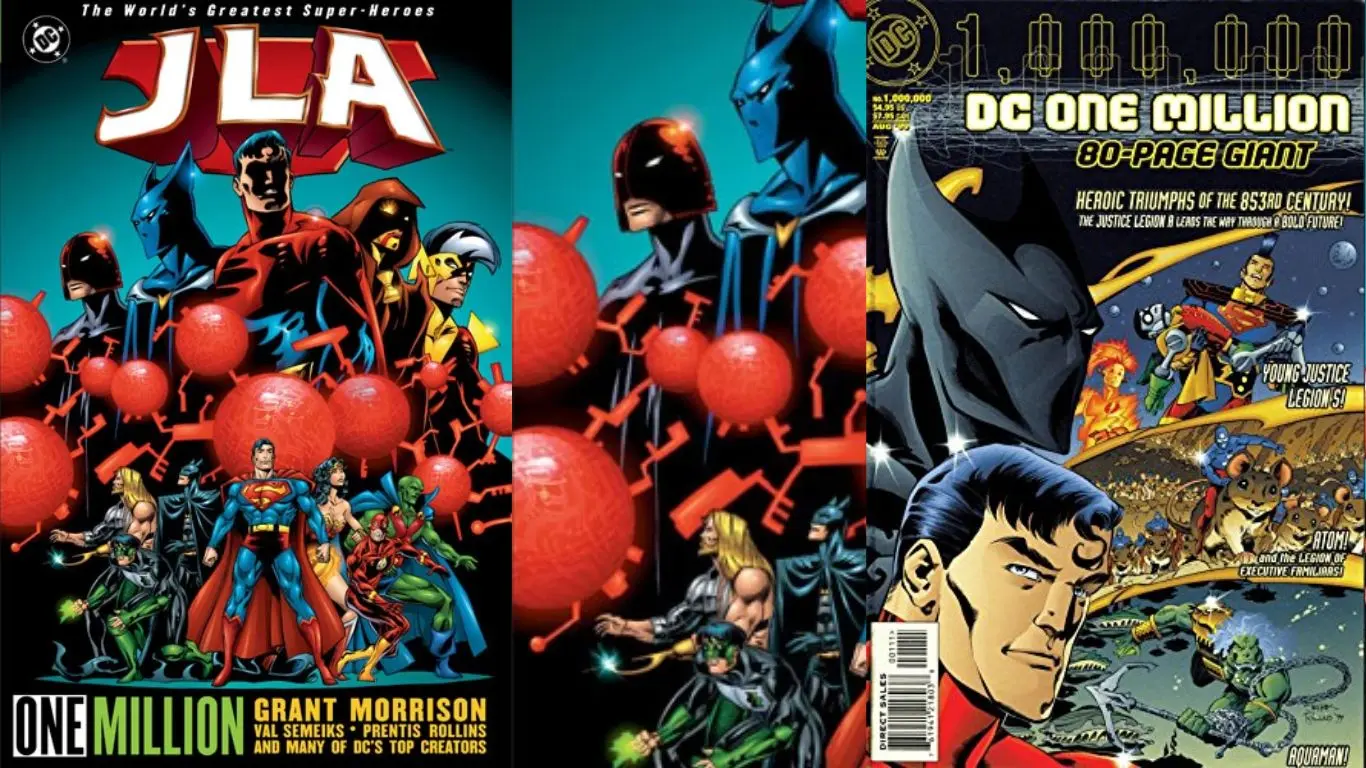
In this ambitious storyline, the Justice League is catapulted into the distant future by the Justice Legion Alpha of the 853rd century Milky Way galaxy. Their mission: to celebrate the return of Superman from his long hibernation within the sun.
However, jubilation turns to chaos as the JLA from two different eras must unite to combat a nefarious plot hatched by the cunning Vandal Savage and the sentient Solaris, the Living Sun. This epic battle unfolds across both the present and the future, creating a complex narrative tapestry that spans nearly every DC comic being published at the time.
“DC One Million” is a testament to Morrison’s storytelling genius, utilizing the vast DC Universe to its fullest potential. It’s a thrilling exploration of legacy, heroism, and the enduring impact of iconic characters across the ages.
Batman in Bethlehem
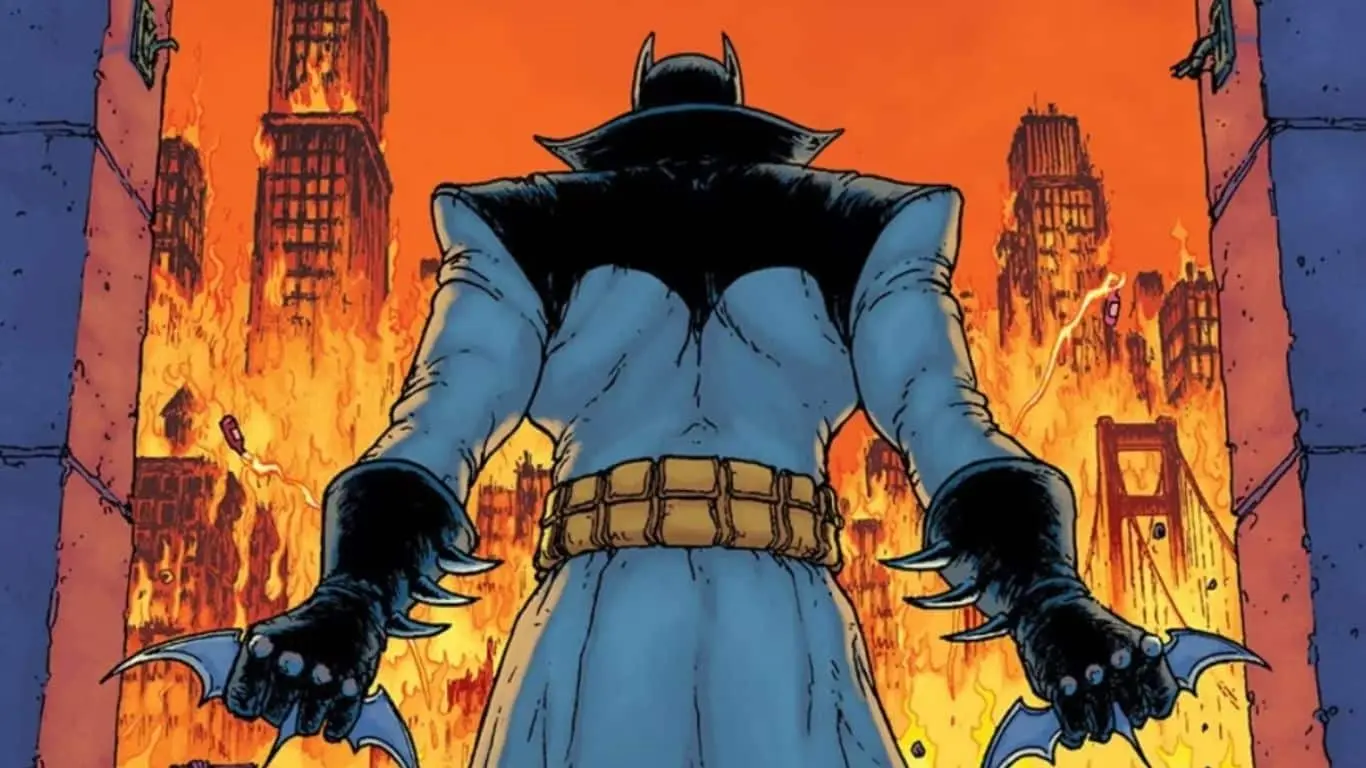
Grant Morrison’s Batman run takes a bold leap into the future, using a dystopian Gotham City to underscore the potential consequences of Batman’s mission’s failure and the complexities of his role as a father to Damian Wayne. This future Gotham, as depicted in issues like Batman #666 and #700, along with Batman Inc Vol 2 #5, presents a grim vision.
In this dark timeline, Damian Wayne assumes the mantle of Batman after the deaths of both his father and mentor, Dick Grayson. Gotham has descended into chaos, plagued by gangs of Jokers, the eerie presence of Professor Pyg, and even a malevolent figure akin to the devil himself, orchestrated by the immortal antagonist Simon Hurt.
Damian’s journey as the new Batman, accompanied by his loyal feline companion Alfred, is marked by both his determination to carry on the legacy and his fraught relationship with Commissioner Barbara Gordon. Morrison’s exploration of this future offers a thought-provoking glimpse into the enduring struggle for justice in Gotham’s darkest hours.
Titans Tomorrow
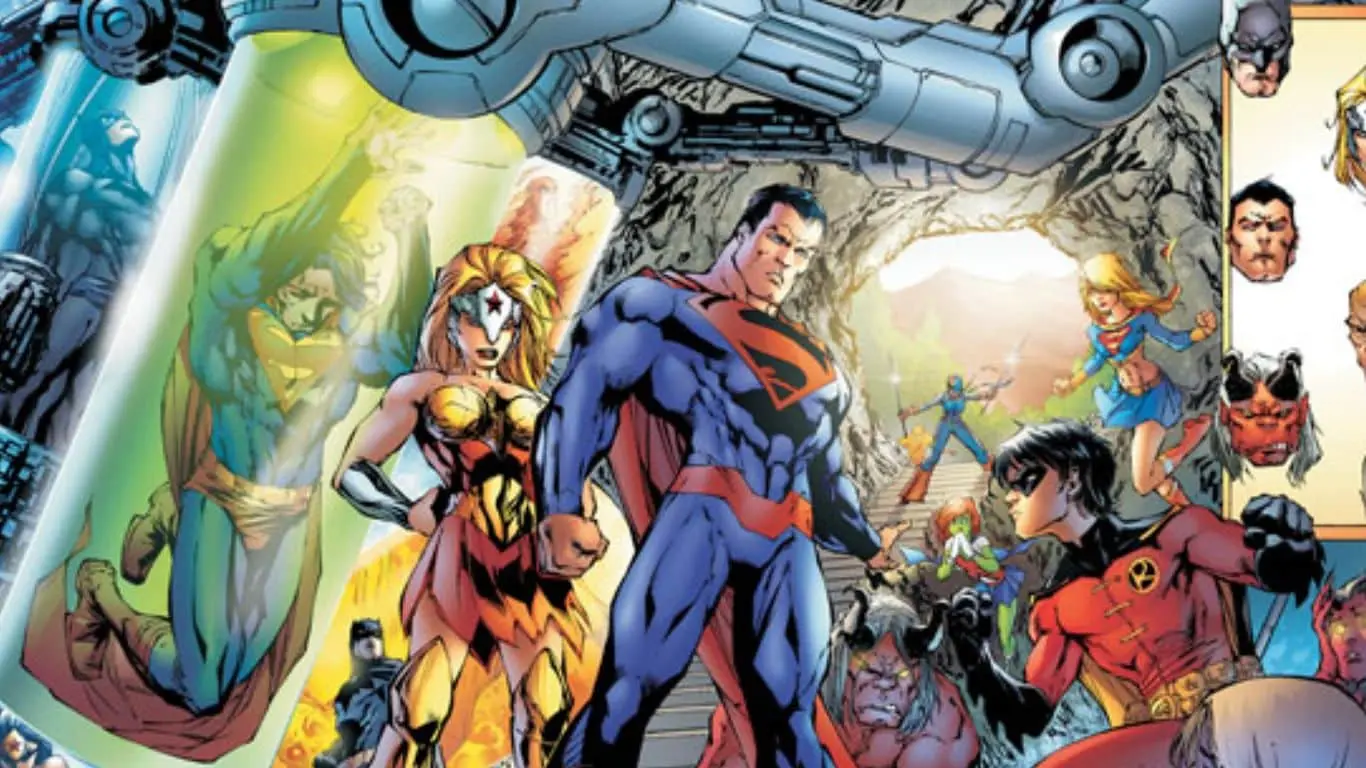
The storyline involving the Teen Titans traveling one thousand years into the future to aid the Legion of Super-Heroes and then accidentally ending up ten years into their own future introduces readers to a captivating narrative concept. In this future timeline, the Teen Titans encounter their adult counterparts, known as the Titans of Tomorrow.
What makes this storyline particularly intriguing is the stark contrast between the younger and older versions of Superboy, Robin, Wonder Girl, and their fellow Titans. The older Titans of Tomorrow exhibit a surprising level of violence and authoritarianism, a departure from the heroic ideals typically associated with these characters.
Additionally, the narrative explores a grim future where many beloved heroes have met their demise during a Crisis event, and the United States has fractured into two factions. This dystopian future shocks the Teen Titans, prompting them to return to their own time with a solemn vow to prevent such a grim fate from ever becoming a reality.
The Living Legends of Superman
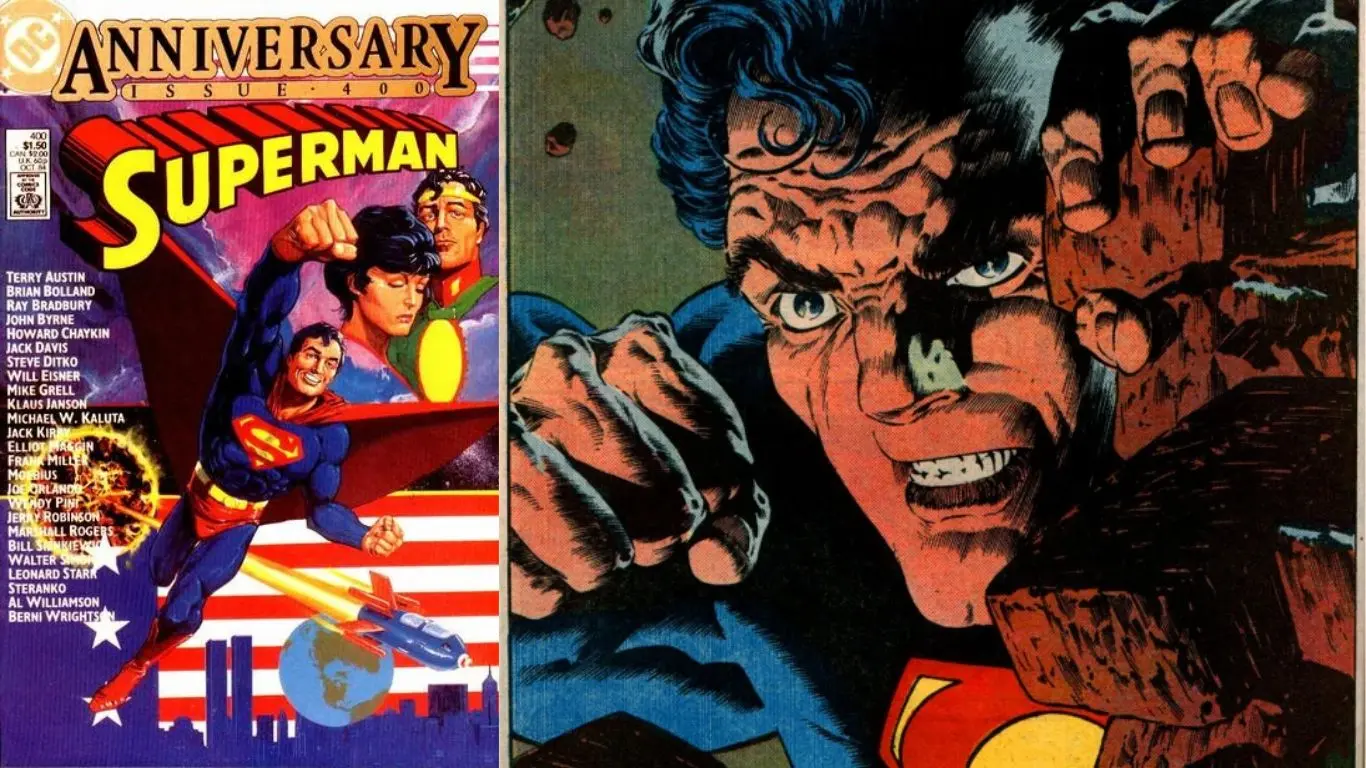
It is a remarkable storyline that was crafted to commemorate the landmark issue, Superman #400. In this eight-part saga, some of the most renowned writers and artists of the era joined forces to pay homage to the iconic character, Superman. The story is a grand tapestry that explores the profound and enduring impact that Superman has had on the universe, both in the past and the present. Each chapter unveils a different facet of Superman’s legacy, showcasing how his actions and heroism have shaped the world.
The culmination of this epic narrative occurs in Jim Steranko’s “The Exile at The Edge of Eternity.” Here, readers are treated to a revelation of cosmic significance – millions of years after Superman’s arrival on Earth, the Man of Steel may have passed away, but his bloodline endures within humanity. This transformation has evolved humanity into a super race capable of interstellar travel.
The story concludes with A’dam’mkent+477SPMN, the last surviving human, who makes a poignant sacrifice to seal a rift in space. “The Living Legends of Superman” stands as a testament to Superman’s enduring legacy and the profound impact he has on the DC Universe.
Also Read: Ranking 10 Most Powerful Members of Secret Six Team in DC Comics
